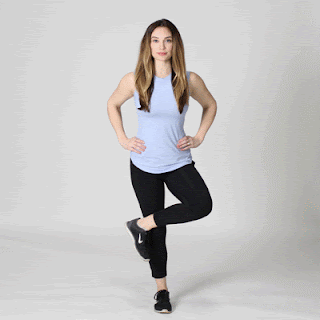WHAT IS PIRIFORMIS SYNDROME OR POCKET SYNDROME? MECHANISM, CLINICAL PRESENTATION AND SIMPLE EXERCISES BY WHICH PHYSIOTHERAPY HELP RECOVER PIRIFORMIS SYNDROME!
Piriformis syndrome
WHAT IS PIRIFORMIS SYNDROME?
Piriformis syndrome is a condition in which the piriformis muscle, located in the buttock region, spasms or becomes tightened due to any reason thus causing the compression or pressure on the SCIATIC NERVE passing through the piriformis muscle.

WHAT ARE THE CAUSES/ RISK FACTORS OF PIRIFORMIS SYNDROME?
The main causes or factors that may lead to piriformis syndrome include the following:
- Overuse of piriformis muscle (prolonged walking, running, climbing stairs, sitting etc)
- Prolong abnormal posture like placing on leg on another, men sitting with their wallets in the back pocket due to which piriformis syndrome is also called POCKET SYNDROME.
- Trauma of the buttock area, causing inflammation and spasm of the surrounding area.
- Fracture of the pelvis, leading to spasm of the piriformis muscle which may cause piriformis syndrome.
- Abnormal spine alignment eg. scoliosis, marked by abnormal pelvic tilt, causing the muscles to spasm and tightened.
- Leg length discrepancy, this provides abnormal over-pressure on the muscles of the body due to abnormal posture.
- Sacro-iliac arthritis
- Hip surgery including hemiarthroplasty and total hip replacement.
WHAT IS THE CLINICAL PRESENTATION OF PIRIFORMIS SYNDROME?
Piriformis syndrome typically involves the following symptoms and clinical presentation in patients:
- More Hip flexion and relatively less hip extension during walking
- Pain during Hip adduction (as piriformis is an adductor)
- Pain starting from the buttock region and may radiate to the lower leg and foot in severe condition (NOTE: piriformis syndrome do not cause low back pain except for caused by SI joint arthritis)
- Swelling in the affected leg
- Aggravated by prolong activities like sitting, walking, standing etc
- Leg in shortened and externally rotated in spine lying also called SPLAYFOOT.
- Limping while walking
WHAT ARE THE DIAGNOSTIC TESTS OF PIRIFORMIS SYNDROME?
Some diagnostic special tests used in physiotherapy to confirm the presence of piriformis syndrome are as follows:
- PACE TEST:
Patient position: sitting with hip and knee flexed, legs hanging off the tablePerformance: It involves resisted abduction and external rotation of the affected limb
Outcome: Pain along the sciatic nerve root
- SLR TEST:
Performance: raise the patient (Hip flexion) leg without rotation
Outcome: Pain along the sciatic nerve root
Performance: the therapist Flexes, adducts and internally rotates the affected hip
Outcome: Pain along the sciatic nerve root
Performance: the therapist performs forced passive internal rotation on the affected hip
Outcome: Pain along the sciatic nerve root
Physiotherapy plays an important role in treating piriformis syndrome with a prognosis of about 6 weeks. The interventions that are used in piriformis syndrome are as follows:
- ULTRASOUND THERAPY OF PIRIFORMIS:
It helps the piriformis and surrounding muscles to relax apply it for 10-14 mins along the piriformis muscle to the greater sciatic foramen.- USING HOT OR COLD PACKS:
It plays a role in subsiding underlying inflammation, spasm and stiffness for a short period of time.
Use it thrice a day for 20-30 minutes prior to therapy exercises enlisted below later in the article.
- SOFT TISSUE TECHNIQUE OR MYOFACIAL RELEASE:












Very informative
ReplyDeleteKeep it up
Awesome post. Anyone is looking for a good physique through physiotherapy, you can see here
ReplyDeleteFitness and Recovery by Physiotherapy